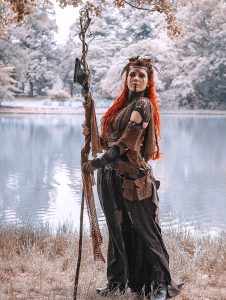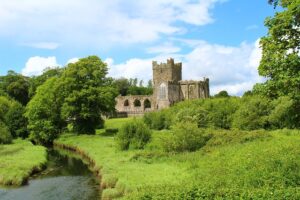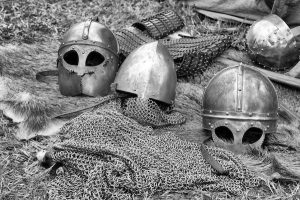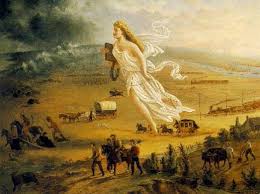Neoclassical Poetry
In order to explore Neoclassical poetry, it is important to understand the origin and meaning of the word “Neoclassicism”. Neoclassicism is the result of combining the words “Neo” and “Classic.” The word “classic,” refers to the writing style and works of the authors of ancient Greece and Rome. The word “Neo” is derived from the Greek word “Neos,” which signifies youthful or new. When we put these two definitions together, we obtain the idea that Neoclassicism refers to the revival and restoration of Classicism.
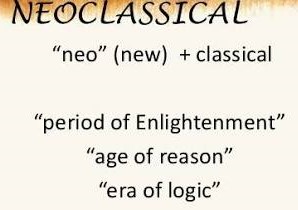
Thus, Neoclassicism is the movement in English literary history that focused on the resurgence of the classical spirit between 1680 and 1789, encompassing the age of Pope, age of Dryden and Age of Jonson. It serves as the model and copy for classicism. The authors of this age made a great effort to follow in the footsteps of the authors writing during the reign of Roman emperor Augustus, who produced such outstanding authors as Horace, Virgil, and Ovid. Thus, the age of Pope and Dryden is also known as the Augustan Age.
Neoclassical poetry is a type of poetry that imitate the style of poetry of the Greek and Roman poets of antiquity. The most prominent poets who departed from the established poetic schools and looked for inspiration in the writings of classical Greek and Roman authors were Pope and Dryden. They endeavoured to follow the Classical Greek and Roman writers.
Stages of Neoclassicism
The Restoration Period
It is called the Restoration period because King Charles II was restored at this time. The Restoration period lasted from 1660 to 1700. Writers of this era, Dryden and Milton, endeavoured to use grand, sublime, and impressive style, scholarly allusions and mythology to restrain the excessive use of imagination.
Augustan Age
The Augustan era is also called the Age of Pope. Pope was the leading poet of the age. This age lasted from 1700 to 1750.
The Age of Johnson
The Age of Johnson lasted until 1798, when the lyrical ballads of Wordsworth and Samuel Coleridge were published starting the Romantic movement.
Characteristics of Neoclassical Poetry
Neoclassical poetry has many characteristics that distinguish it from other forms of poetry. Some of the main features of Neoclassical poetry are:
- Rationalism
- Scholarly Allusions
- Didacticism
- Realism
- Adherence to Classical Rules
- Heroic Couplet
- Lack of Passionate Lyricism
- Objectivity
- Poetic Diction
1. Rationalism
Rationalism is the most important feature of Neoclassical poetry. Neoclassical poets considered reason and intellect the source of learning, knowledge and inspiration for their poetry. Neoclassical poetry is a reaction to the poetic style of the Renaissance. It is the unique result of intellect rather than that of imagination and fancy.
Unlike Romantic poetry, which is entirely the outcome of the poet’s feelings and sentiments, Neoclassical poetry is fabricated, simulated, and stereotypical type of poetry. In Romantic poetry, emotions play an important role. On the contrary, in Neoclassical poetry; reason and intellect are the ruling elements. It is a well-known fact that Coleridge and Wordsworth wrote profound poetry when their imaginations were fired.
They did not emphasize the reason for the poem. Neoclassical poets disregarded imagination, feelings and emotions while composing their poems. This is the reason; their poetry can be labeled artificial and synthetic.
2. Scholarly Allusions
Neoclassical poets always used scholarly allusions in their poetry. Since they were all highly educated and well versed in various fields of study, they knew a lot about religious, biblical and classical literature.
Allusions helped them convey their message effectively and easily to their readers. Thus, their poetry is full of references and allusions to classical authors such as Virgil, Horace and Homer. They wanted to write in the manner of these classical masters. The following examples from Alexander Pope’s Rape of the Lock will clarify the point:
Safe past the Gnome thro’ this fantastic band,
A branch of healing Spleenwort in his hand.
(Rape of the Lock, Canto IV)
In the above-mentioned lines, Spleenwort is a branch of a tree. Pope is referring to Virgil’s Aeneid, wherein Aeneas visits the gangland safely just because of having magical branch of a tree.
The Goddess with a discontented air
Seems to reject him, tho’ she grants his pray’r.
A wond’rous Bag with both her hands she binds,
Like that where once Ulysses held the winds.
(Rape of the Lock, Canto IV)
In the above lines, the poet alludes to Homer’s Odyssey.
3. Didacticism
Neoclassical poets rebelled against the Romantic nature of Renaissance poetry. Romantic poets wrote poetry just for the sake of poetry, like John Keats. They tried to ignore morality and didacticism in their poetry. Their main purpose was to express emotions and give vent to their feelings.
On the other hand, the Neoclassical poets greatly emphasized the didactic purpose of the poem. They tried to correct the problems of humanity with the magical power of poetry. The Neoclassical poets were mainly concerned with the didactic aspects of their poetry.
This is the reason that most Neoclassical poetry is full of didacticism. Consider the following lines from Alexander Pope’s poem “An Essay on Man,” which is certainly an excellent example of this:
Vice is a monster of so frightful mien,
As to be hated needs but to be seen;
Yet seen too oft, familiar with her face,
We first endure, then pity, then embrace.
(An Essay on Man by Alexander Pope)
4. Realism
Realism is a characteristic of Neoclassical poetry. The Neoclassical poets, unlike Romantic poets, did not live in the world of imagination. They were staunch realists and presented a true picture of their society. They did not turn their eyes to the harsh realities of life.
The Neo Classics were keen observers and presented in their poetry what they consciously experienced. These poets were not escapists like the Romantic poets, who turned their backs on the harsh realities of life and tried to escape into the world of imagination. Neoclassical poets were practical men and practically lived among the people.
They were very keen observers of their society. They avoided abstract ideas, imaginative thoughts and idealism in their poetry. The poetry of Dryden and Pope is full of excellent examples of realism. The following examples will elucidate the point:
When I consider Life, ’tis all a cheat;
Yet, fooled with hope, men favour the deceit;
Trust on, and think to-morrow will repay:
To-morrow’s falser than the former day;
Lies worse; and while it says, we shall be blest
With some new joys, cuts off what we possesst.
(Aurang Zeb by John Dryden)
5. Adherence to Classical Rules
The Neoclassical poets were, no doubt, great proponents of classical rules. They tried their best to revive Classicism in their poetry by following every rule of Classicism. Their main concern was to follow the classical rules and use them in their poetry. Thus, the Neoclassical poetry is also called pseudo classical poetry. They respected many classical rules. Look at the following example from Pope’s poetry:
Those RULES of old discovered, not devised,
Are Nature still, but Nature Methodized;
Nature, like Liberty, is but restrained
By the same Laws which first herself ordained.
(Essay on Criticism by Alexander Pope)
6. Heroic Couplet
Heroic couplet is another hallmark of Neoclassical poetry. The Neoclassical poets were primarily responsible for reputation of heroic couplets in the history of English literature. They were the champions of heroic couplet. In the entire history of English literature not a single poet can contest with the mastery and skill of Neoclassical poets when it comes to handling heroic couplet.
They outclassed all the poets in this regard. Chaucer was the first poet, who employed heroic couplets in his poetry. Though many renowned poets of the world tried their hands at heroic couplets, yet Dryden and Pope are the only poets, who outdid everyone in this regard. They are considered as the real masters of heroic couplets.
What is most important about these two poets is that they polished the heroic couplet, corrected it, and made it regular, more flexible and a polished medium of poetic expression. It is said that Dryden wrote almost thirty thousand heroic couplets. His poems like Mac Flecknoe, Absalom and Achitophel, and The Medal are all in heroic couplets. For example:
Music resembles poetry: in each
Are nameless graces which no methods teach,
And which a master hand alone can reach.
(An Essay on Criticism by Alexander Pope)
Good nature and good sense must ever join;
To err is human, to forgive, divine.
(An Essay on Criticism by Alexander Pope)
7. Lack of Passionate Lyricism
Romantic poetry is popular for its lyrical quality, while in Neoclassical poetry, this quality of lyricism is absent due to indifference of the Neoclassical poets for feelings, passion, and emotions. They looked at the passion with distrust and suspicion. Due to this reason only a few lyrics were written in the age of Pope and Dryden. They didn’t give free rein to their imagination; rather they dwelt upon the intellectual aspects of poetry. Look at the following example:
I am His Highness’ dog at Kew;
(Engraved on the Collar of a Dog Which I Gave to His Royal Highness by Alexander Pope)
Pray tell me, sir, whose dog are you?
8. Objectivity
Objectivity is an important feature of Neoclassical poetry. It is the ability to see and describe the world around us without bias or personal opinion. This objectivity allows us to appreciate the beauty in everyday things, and to find meaning in the simplest of objects. It is a way of looking at the world that allows us to see the beauty in all things, no matter how ordinary they may seem.
By seeing the world objectively, we can find a sense of wonder in the every day, and a deep understanding of the world around us.
As Neoclassical poets were completely against subjectivity in poetry, they endeavoured hard to write objective poetry. They avoided giving vent to their feelings; rather they dwelt upon the miseries, hardships and problems of the people around them. That is why; we find very little information about the lives of Neoclassical poets in their poetry.
9. Poetic Diction
The poetic diction of Neoclassical poetry is drastically different from that of Romantic poetry. In Romantic poetry, the diction is flexible and easy to use, while in Neoclassical poetry, it is restrained, rigid, and concrete. The Neoclassical poets loved to using a different style of language for poetry.
They believed that there should be a dividing line between the language of poetry and prose. They put more emphasis on exact styles for poetry. They were of the view that specific style, decorum, and mannerism are the essential elements of poetry. Alexander Pope was very mindful about the language of his poetry. He says in Essay on Criticism:
Expression is the dress of thought, and still
(Essay on Criticism by Alexander Pope)
Appears more decent as more suitable.
A vile Conceit in pompous words express’d
Is like a clown in regal purple dress’d
For diff’rent styles with diff’rent subjects sort,
As sev’ral garbs with country, town, and court.

